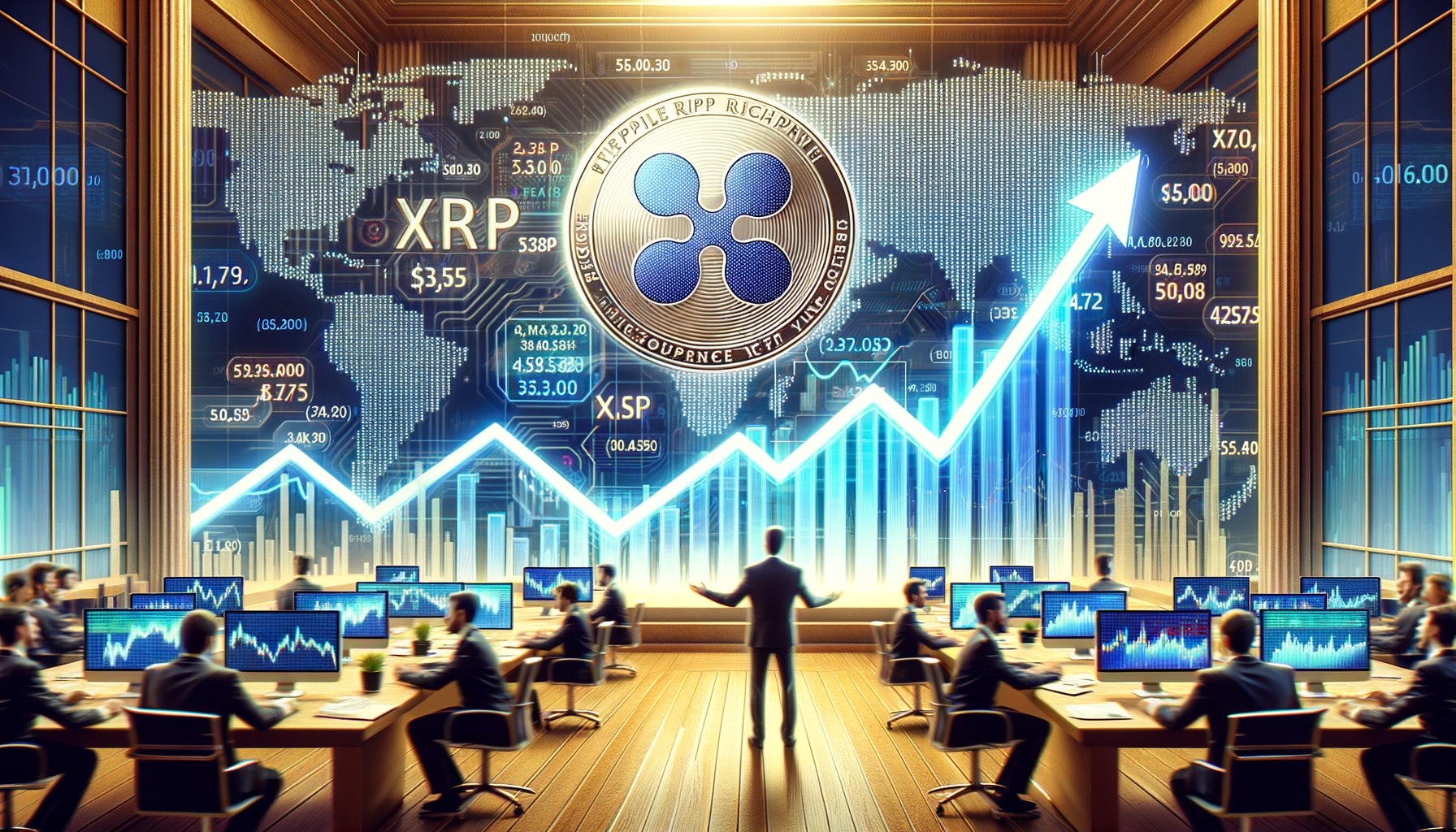Tariff Price Hikes: Retailers Issue Warning Of Future Increases

Table of Contents
The Impact of Tariffs on Import Costs
Increased tariffs directly translate to higher import costs for retailers. This is because tariffs are essentially taxes on imported goods, adding to the overall price paid by retailers for products sourced from overseas. This increased Cost of Goods Sold (COGS) significantly impacts profitability and forces retailers to consider passing these increased costs onto consumers. The impact reverberates throughout the supply chain, from manufacturers to distributors and finally, the consumer. Global trade relies heavily on imports, and the increased cost of these imports creates a domino effect on retail prices.
- Tariffs increase the price of raw materials and finished goods: Many products rely on imported components, meaning even a small tariff increase can significantly inflate the final price.
- Higher import costs reduce profit margins for retailers: Retailers operate on tight margins, and absorbing increased import costs without passing them on to the consumer can severely impact their profitability and potentially threaten their viability.
- Some retailers may choose to absorb some costs initially, but sustainability is questionable: While some retailers might initially try to absorb some of the increased costs to maintain competitiveness, this strategy is not sustainable in the long term, especially with persistent tariff increases.
- The impact is particularly pronounced on goods with high import dependency: Products heavily reliant on imported components, such as electronics, clothing, and certain food items, will see the most dramatic price increases.
Retailers' Strategies to Mitigate Price Increases
Faced with rising costs, retailers are employing various strategies to mitigate the impact of tariff price hikes. However, these measures have limitations and often only delay the inevitable price increases for consumers. These strategies are crucial for maintaining profitability, but they aren't a long-term solution to the underlying problem of escalating tariffs.
- Negotiating with suppliers to absorb some of the increased costs: Retailers are engaging in intense negotiations with their suppliers, attempting to share the burden of increased import costs. However, the success of these negotiations varies depending on the supplier's own cost structure and market power.
- Exploring alternative sourcing options to reduce reliance on tariff-affected countries: Retailers are actively seeking alternative suppliers in countries with more favorable trade relationships to lessen their dependence on regions impacted by high tariffs. This often involves significant investments in new relationships and supply chain infrastructure.
- Implementing cost-cutting measures within their operations: Retailers are streamlining operations, seeking efficiencies, and implementing cost-cutting measures wherever possible. This can include reducing staff, optimizing logistics, and renegotiating contracts with service providers.
- Gradually increasing prices to avoid significant shocks to consumers: Many retailers are opting for small, incremental price increases to soften the blow to consumers and avoid a sudden, drastic price jump that could negatively impact sales.
- Diversifying their supply chains to reduce risk: Building more resilient and diverse supply chains is a key strategy for mitigating future tariff shocks. This helps to avoid over-reliance on any single source or region.
The Limitations of Mitigation Strategies
While retailers are actively trying to mitigate the impact, the limitations of these strategies are becoming increasingly apparent. The extent to which they can absorb increased costs without impacting profitability or pricing is limited. The pressure to maintain competitiveness and customer satisfaction adds further constraints.
- Consumer demand might be affected by price increases: Significant price increases can reduce consumer demand, leading to decreased sales and potentially impacting overall business revenue. Price elasticity of demand plays a significant role here.
- Intense market competition prevents passing on all costs: In highly competitive retail markets, passing on all increased costs to the consumer can be challenging as competitors may offer similar products at lower prices.
- Cost-cutting may impact product quality or customer service: Aggressive cost-cutting measures can negatively impact the quality of products or the level of customer service offered, potentially harming brand reputation.
- Complete supply chain diversification is often impractical and expensive: Completely diversifying supply chains is a costly and time-consuming undertaking, often involving significant investments in new infrastructure and logistics.
The Broader Economic Implications of Tariff Price Hikes
The cumulative effect of tariff price hikes on multiple goods and services contributes to broader inflationary pressures, impacting consumer spending and overall economic growth. This could lead to increased pressure on household budgets and potentially contribute to a cost of living crisis. The ripple effects extend far beyond the retail sector.
- Increased prices reduce consumer purchasing power: Higher prices for essential goods and services reduce consumer purchasing power, limiting their ability to spend on discretionary items and potentially hindering economic growth.
- Inflation erodes savings and reduces economic stability: Persistent inflation erodes the value of savings and investments, creating economic uncertainty and potentially impacting long-term financial planning.
- Higher costs impact businesses across various sectors: The increased costs associated with tariff hikes are not limited to retail; they impact businesses across various sectors, leading to reduced profitability and potentially job losses.
- Potential for reduced economic growth and even recessionary pressures: Sustained inflationary pressures driven by tariff price hikes can contribute to reduced economic growth and, in severe cases, even recessionary pressures.
Conclusion
The warnings from retailers regarding future price increases due to tariff hikes are a serious indicator of the significant economic impact of global trade policies. While retailers are attempting to mitigate these effects through various strategies, the reality is that consumers are likely to face increased prices across a broad range of goods. Understanding the implications of these tariff price hikes is crucial for both businesses and consumers to adapt and navigate this challenging economic landscape. Stay informed about potential tariff price hikes and adjust your spending accordingly to mitigate their impact on your budget. Learn more about how tariff price hikes affect your favorite products and prepare for potential future increases. Understanding the dynamics of tariff price hikes is essential for navigating the current economic climate.

Featured Posts
-
 Lich Thi Dau Chinh Thuc Vong Chung Ket Giai Bong Da Thaco Cup 2025
May 01, 2025
Lich Thi Dau Chinh Thuc Vong Chung Ket Giai Bong Da Thaco Cup 2025
May 01, 2025 -
 Zdravkove Prve Ljubavi Prica O Pjesmi Kad Sam Se Vratio
May 01, 2025
Zdravkove Prve Ljubavi Prica O Pjesmi Kad Sam Se Vratio
May 01, 2025 -
 Sbi Holdings Rewards Shareholders With Xrp Ripple Xrp News
May 01, 2025
Sbi Holdings Rewards Shareholders With Xrp Ripple Xrp News
May 01, 2025 -
 Roden Loos Alarm Na Melding Gaslucht
May 01, 2025
Roden Loos Alarm Na Melding Gaslucht
May 01, 2025 -
 Brtanwy Wzyr Aezm Kw Kshmyr Ke Msyle Pr Dstawyz Pysh Ky Gyy
May 01, 2025
Brtanwy Wzyr Aezm Kw Kshmyr Ke Msyle Pr Dstawyz Pysh Ky Gyy
May 01, 2025
